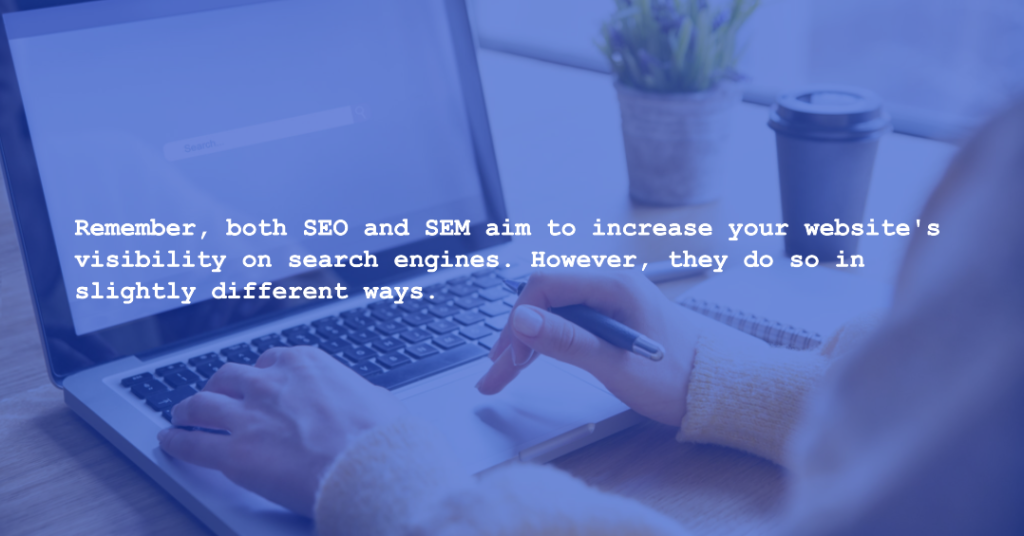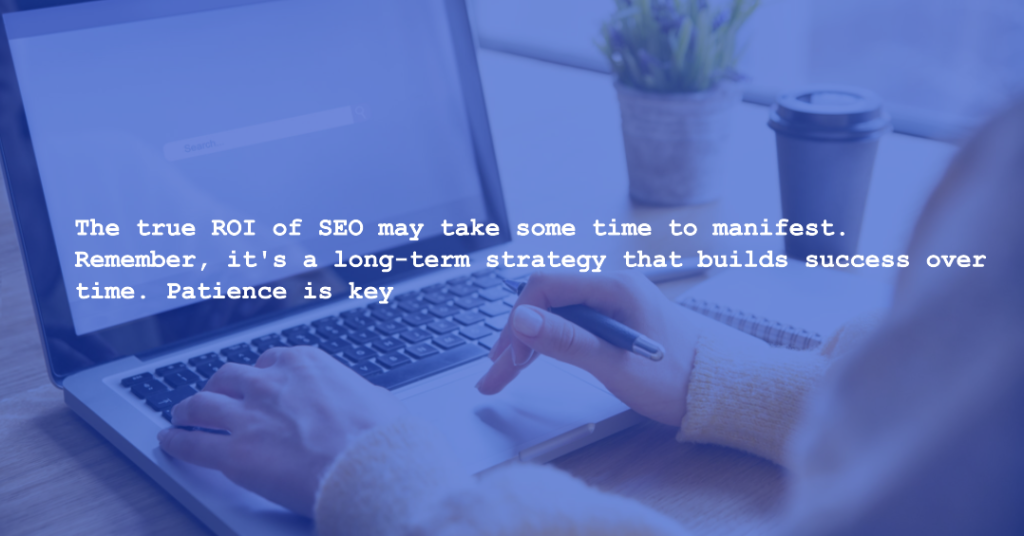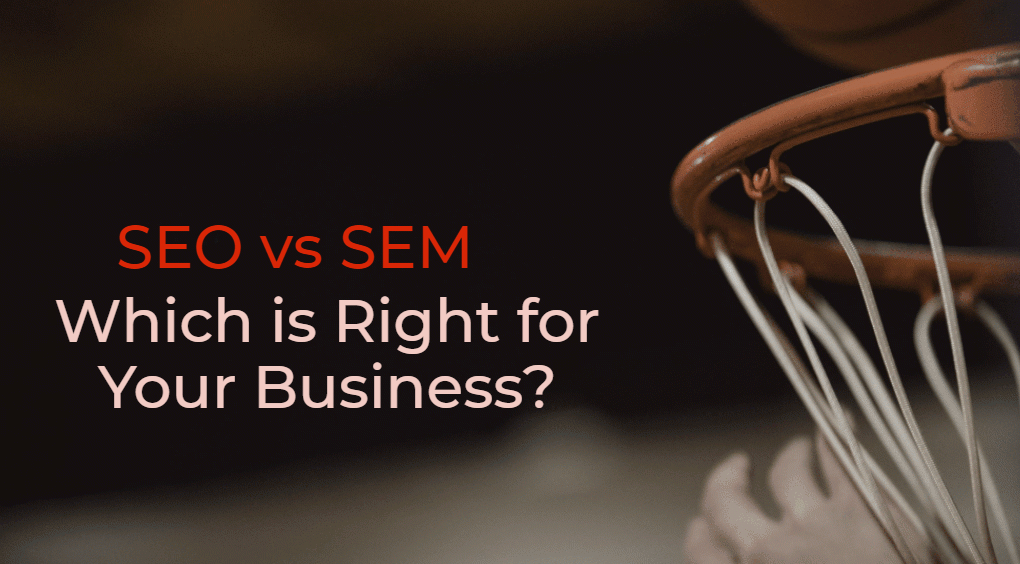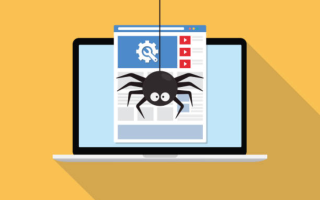As a business owner, you’ve probably come across these terms more often than not. They’re key components of online marketing that can lift up your brand, boost your online visibility, and drive quality traffic to your website. But what do they mean, and how are they different?
With over 63,000 searches happening on search engines every second, understanding the key differences between Search Engine Optimization (SEO) and Search Engine Marketing (SEM) is crucial for your business.
In this article, you’ll find the key differences between Search Engine Optimization (SEO) and Search Engine Marketing (SEM), and learn how to choose the right strategy for your business. Let’s unseal the secrets to amplify your online visibility.
Firstly, let’s define what these terms mean. SEO is the process of optimizing your website to rank higher in search engine results pages, thereby increasing the amount of organic (or free) traffic that your website receives. On the other hand, SEM encompasses SEO and more. It involves the promotion of websites by increasing their visibility in search engine results pages (SERPs) primarily through paid advertising.
- SEO: Organic, unpaid efforts to rank higher on search engine results
- SEM: Paid and unpaid strategies to increase visibility on search engine results
“Remember, both SEO and SEM aim to increase your website’s visibility on search engines. However, they do so in slightly different ways.“

Now that we’ve set the foundation, we’ll delve deeper into each strategy’s characteristics, pros, cons, and suitability for different types of businesses. Stay tuned to find out whether SEO or SEM is the right fit for you!
Table of Contents
Key Differences: Defining SEO and SEM and How They Work
Let’s dive right into the heart of the matter: the key differences between SEO and SEM. When it comes to boosting your online presence and driving quality traffic, it’s vital to understand exactly what these two strategies entail and how they operate.
Search Engine Optimization (SEO)
Did you know that organic search accounts for 53% of website traffic? That’s right, SEO is all about organic reach. It focuses on improving a website’s rankings in the non-paid section of search results. The goal of SEO is to make your website more appealing to search engines, and to increase your visibility to users searching for the products or services you offer.
Key elements of SEO include:
- Keyword research and optimization: This involves identifying the keywords that your target audience is using, and then incorporating those keywords into your website’s content.
- Website architecture: Having a website that’s easy to navigate not only improves user experience but also can improve your ranking on search engine results.
- On-Page SEO: This refers to optimizing individual web pages in order to rank higher and earn more relevant traffic in search engines. It involves both the content and HTML source code of a page that can be optimized.
- Technical SEO focuses on improving the technical aspects of a website like page speed, mobile-friendliness, and website security. It’s all about creating a solid foundation that gives your content the best chance it can have to rank for relevant keywords and phrases.
- Local SEO: This involves optimizing your online presence so that your business appears in local search results. This can be particularly beneficial if your business has a physical location or serves a specific geographical area.
- Link-building: This encompasses strategies to increase the number and quality of inbound links to your webpages.
Search Engine Marketing (SEM)
On the other hand, SEM goes beyond SEO by incorporating paid search advertising into the mix. Did you know that Paid search ads increase brand awareness by 80%? SEM serves as an umbrella strategy, encompassing both organic SEO tactics and paid advertising options to maximize your presence on search engine results pages. So, if you’re looking to take your online visibility to the next level, SEM might be the comprehensive approach you need.
Key elements of SEM include:
- Pay-per-click advertising (PPC): This is a form of online advertising where you pay a fee each time a user clicks on one of your ads.
- Google AdWords: This is a popular platform for executing SEM strategies, including PPC campaigns.
- Quality Score: This is a metric used by Google that can influence both the rank and cost of your ads.
“Note: While SEO is a component of SEM, not all SEM strategies involve SEO. However, a comprehensive approach to your online marketing will likely involve both SEO and SEM tactics.“
In summary, while SEO involves organic strategies to improve your website’s visibility in search engine results, SEM employs both organic and paid strategies to increase your visibility. Both are crucial for driving quality traffic and improving your online presence, but the right strategy for your business will depend on your specific goals, budget, and industry.
See also: Top 8 AI Tools to Write Optimized Content in 2023
Why SEO Is Right for Your Business: Benefits, Risks and ROI.
So, you’re wondering why SEO might be the right strategy for your business? Well, the answer lies in its numerous benefits, risks, and the return on investment it can provide. SEO leads have a 14.6% close rate, while outbound leads (such as direct mail or print advertising) have a 1.7% close rate. Let’s delve deeper into each of these aspects.
Benefits of SEO
SEO, or Search Engine Optimization, offers a myriad of benefits for businesses of all sizes and types. It’s all about improving your online presence, driving quality traffic to your website, and ultimately, amplifying your sales and profits. Here are the key benefits:
- Increased Visibility: By optimizing your website and content for search engines, you can climb the rankings and get seen by more potential customers.
- Quality Traffic: SEO attracts users who are actively searching for your products or services, meaning you’ll attract high-quality, targeted traffic.
- Cost-Effective: Unlike paid advertising methods, SEO offers a cost-effective way to attract new customers. It’s about investing time and effort, rather than large amounts of money.
Risks of SEO
While SEO has undeniable benefits, there are also potential risks to keep in mind. SEO is a long-term strategy that requires patience, and there’s no guarantee of results. Here are some of the risks to consider:
- Google Algorithm Changes: Search engine algorithms are constantly changing, which can impact your rankings.
- Competition: SEO is a competitive field. If your competitors are also optimizing their sites, it can be tough to rank above them.
- Penalties: If you don’t follow search engine guidelines, your site could be penalized, which could negatively impact your rankings.
ROI of SEO
Return on Investment, or ROI, is a crucial metric for any business strategy, and SEO is no exception. While measuring the ROI of SEO can be complex, it’s generally accepted that SEO provides a high return on investment over the long term. This is primarily due to its cost-effectiveness and the quality of traffic it attracts.
“Note: The true ROI of SEO may take some time to manifest. Remember, it’s a long-term strategy that builds success over time. Patience is key.“

So, is SEO right for your business? The answer largely depends on your specific goals, resources, and timeline. But with its potential to dramatically amplify your online visibility and attract high-quality traffic, it’s certainly worth considering.
See also: What Is Parasite SEO? How to Leverage It for Success
Why SEM Is Right for Your Business: Benefits, Risks and ROI
Deciding whether Search Engine Marketing (SEM) is the right strategy for your business can be a daunting task. It’s a significant investment that requires careful planning and strategic thinking. So, let’s jump into the benefits, risks, and Return on Investment (ROI) associated with SEM to help you make an informed decision.
Benefits of SEM
- Instant Visibility: Unlike SEO, which can take months to show results, SEM offers immediate visibility. Your ads can start appearing in search results as soon as you launch your campaign.
- Targeted Reach: SEM allows you to target specific keywords, demographics, and geographical locations, ensuring your ads are seen by the most relevant audience.
- Measurable Results: With SEM, you can track the success of your campaigns with precision. It provides detailed insights, helping you understand what’s working and what needs improvement.
Risks of SEM
While Search Engine Marketing (SEM) offers a plethora of advantages, it’s not without its risks. Let’s delve into some of the potential challenges you may encounter when employing SEM strategies.
1. High Competition:
One of the most significant risks of SEM is the high level of competition. Since SEM is a popular online marketing strategy used by businesses around the globe, the competition for keywords can be fierce. This can
drive up the cost of paid search advertising, potentially making it less affordable for smaller businesses or those just starting out. Additionally, once you stop paying for ads, your visibility on the search engine results page (SERP) decreases dramatically.
2. Costly Mistakes:
Unlike SEO, mistakes in SEM can be costly. If you bid on wrong keywords or set up your campaigns incorrectly, you could end up wasting a significant amount of money.
3. Dependency on Paid Ads:
With SEM, you might become dependent on paid advertising, which could become expensive in the long run. Once you stop paying for ads, your visibility can drop instantly. Therefore, it’s essential to strike the right balance between organic and paid strategies in your overall digital marketing plan.
“While SEM offers a plethora of benefits, it’s not without its risks. Understand these potential pitfalls to navigate your SEM strategy effectively.“
See also: How Google Ads Are Best for Affiliate Marketing?
Cost Comparison: Analyzing the Budget of SEO and SEM
When it comes to implementing a digital marketing strategy, the budget is often a critical factor that influences the decision between SEO and SEM. Both strategies require investment, but the nature and timing of these costs differ significantly. Let’s take a closer look.
SEO Costs
SEO is often seen as a long-term investment. Costs associated with SEO typically include: As you can see, both SEO and SEM have their own unique set of advantages and considerations. The right approach for your business will depend on your specific objectives, budget, industry, and the degree of competition in your market. You might find
1. Technical Aspects: This may involve hiring an SEO expert or investing in SEO tools and software.
2. Content Creation: Regularly creating and posting high-quality content is a critical aspect of SEO. This could involve costs for hiring professional writers or marketers.
3. Ongoing Maintenance: SEO is not a set-it-and-forget-it strategy. It requires ongoing maintenance and updates, which could mean recurring costs.
SEM Cost:
We’ve likely asked ourselves, “How much is SEM going to cost me?”. Well, friend, there’s no one-size-fits-all answer, but let’s break it down.
SEM costs can be divided into two main categories:
- Set-up and management fees
- Pay-Per-Click (PPC) spend
The set-up and management fee is what you pay to your SEM agency or in-house team for their expertise. This includes keyword research, campaign set-up, monitoring, and regular optimization. The cost can vary widely based on the complexity of your campaign and the level of expertise of the agency or individual you’re working with.
On the other hand, your Pay-Per-Click (PPC) spend is what you pay to the search engine itself each time someone clicks on your ad. This is determined through a bidding system, where you decide how much you’re willing to for each click. This can vary greatly depending on the competitiveness of your chosen keywords.
Keyword Research: Finding the Right Keywords for SEO and SEM
Let’s dive right into the heart of both SEO and SEM strategies: keyword research. This pivotal step is the process of identifying and analyzing certain search terms that people enter into search engines. The insight you gain from these analyses can help you gauge which keywords to target with your SEO and SEM efforts.
Why is Keyword Research Important?
Keyword research is the cornerstone of successful SEO and SEM campaigns. By understanding the exact phrases and terms your potential customers are using, you can tailor your content, ads, and SEO strategy to meet their specific needs. This not only improves your visibility on search engines but also increases the likelihood of attracting high-quality traffic to your site.
How to Conduct Keyword Research for SEO and SEM
Conducting keyword research takes time, but the payoff can be substantial. Here are some steps to get you started:
Step 1: Understand Your Market and Customer Needs
First things first, you need to have a clear understanding of your market and the needs of your customers. What are they searching for? What kind of language do they use? Understanding the terms your potential customers use when searching online is the foundation of keyword research.
Step 2: Use Keyword Research Tools
There are many keyword research tools available, some free and some paid. These tools can help you identify popular search terms related to your business. Google’s Keyword Planner, SEMrush, and Moz’s Keyword Explorer are just a few examples.
Step: 3. Analyze the Competition:
Understanding what keywords your competitors are targeting can give you an edge. By discovering their most successful keywords, you can aim to rank for similar keywords.
See also: Search Engine Optimization (SEO) Ranking Factors
On-Page Optimization: How to Optimize Your Website for SEO and SEM
If you’re looking to boost your online presence and drive quality traffic to your website, on-page optimization is a surefire strategy to consider. On-page optimization refers to all the measures that can be taken directly within your website to improve its position in search rankings. This process plays a critical role in both Search Engine Optimization (SEO) and Search Engine Marketing (SEM), and today you’re going to find out how to leverage it effectively.
On-Page SEO
On-page SEO focuses primarily on optimizing individual webpages to rank higher and earn more relevant traffic in search engines. This involves the optimization of both the content and HTML source code of pages.
Here’s how you can go about it:
Meta Data
When it comes to SEO and SEM, metadata plays a crucial role. But what exactly is metadata?
Metadata is information about a webpage that doesn’t appear on the page itself but instead in the page’s code. It’s akin to a book’s synopsis that tells search engines what your webpage is about. The most common types of metadata are title tags, meta descriptions, and meta keywords.
Heading Tag
The heading tag, also known as the H1 tag, is an essential SEO element that helps search engines understand the content of your page. It’s like the title of a book; it tells what the main subject of the page is. For optimal results, your heading tag should be unique, descriptive, and contain your primary keyword.
Why is it important?

“Effective use of heading tags can significantly improve your website’s visibility in search engine results. It not only helps search engine algorithms identify and index your content accurately, but also improves user experience by making your content easier to read and navigate.“
Now, let’s compare this with SEM:
In SEM, heading tags are also crucial. However, the focus here is on pay-per-click (PPC) advertisements. These ads often appear at the top of search results, and their headings (ad titles) play a pivotal role in attracting user attention and clicks.
In essence, SEO aims to optimize heading tags to enhance both organic search visibility and user experience. On the other hand, SEM focuses on paid search strategies, such as pay-per-click (PPC) advertising, display ads, and even social media advertising. While these two approaches can complement each other to craft a robust digital marketing strategy, it’s crucial to grasp the unique advantages and limitations of each.
Content is always king
Whether you’re focusing on SEO or SEM, your content is always your most crucial asset. High-quality content is the foundation of any successful online marketing strategy.
It’s been said time and again, “Content is king,” and this truism holds in the world of SEO and SEM.
Visual Graphics
Let’s turn our focus now to the world of visual graphics. These are key players in both SEO and SEM strategies, but they play different roles in each.
In the vibrant world of SEO, visual content like images and videos can greatly enhance your site’s appeal and user engagement. However, it’s not just about throwing in random pictures. It’s about providing meaningful graphics that enhance the user’s understanding of your content. To score high on search engine rankings, these graphics need to be optimized. This means using appropriate file names, alt text, and ensuring the file size doesn’t slow down your site.
On the other hand, in SEM, visual graphics come into play in a different way. They can be used in paid ads to catch a user’s attention. It’s about creating eye-catching visuals that compel users to click on your ad. However, similar to SEO, these images or videos need to be relevant and engaging to your target audience.
Note: A key point to remember is that while visuals are important, they should not overshadow the written content on your site or ads. The balance between text and graphics is crucial in both SEO and SEM strategies.
To sum up, here’s a brief comparison of how visual graphics are used in SEO and SEM:
| SEO | SEM |
| Provide meaningful content for a better understanding | Catch user’s attention in ads |
| Relevant and engaging to the target audience | Create compelling visuals to drive clicks |
| Optimize for better search engine ranking | Relevant and engaging to target audience |
While SEO and SEM have their unique uses of visual graphics, they both aim for one thing: to enhance the user’s experience and drive more engagement to your business. The choice between SEO and SEM ultimately depends on your business goals and resources. With the right strategy, you can leverage the power of visual graphics to boost your online presence and drive quality traffic to your business.
Analyze the Competition
Understanding what keywords your competitors are targeting can give you an edge. By discovering their most successful keywords, you can aim to rank for similar keywords.
See also: Programmatic Advertising: What Is It, How Does It Work?
Off-Page Optimization: Building Backlinks and Boosting Your SEO and SEM
The world of off-page optimization. This is a critical component for both SEO and SEM strategies, focusing primarily on activities that are conducted outside the boundaries of your website. The main objective? To improve your site’s position in search engine result pages (SERPs).
The Power of Backlinks
Essentially, backlinks are the backbone of off-page optimization. These are links from other websites to your own, acting as ‘votes of confidence’ in your content. But it’s not just about quantity – the quality of your backlinks matters a lot too. High-quality backlinks from reputable sites can boost your SEO performance and increase your site’s visibility in paid search results.
Building Backlinks: A Strategic Process
Building backlinks, however, is not a simple process. It’s strategic, time-consuming, and requires a lot of effort. Here are some of the most effective ways to build high-quality backlinks:
- Content creation: Create high-quality, informative and engaging content that others would naturally want to link to.
- Guest blogging: Write posts for other related blogs and include a link back to your website.
- Infographics: Design visually appealing infographics that others will want to share, naturally generating backlinks.
- Social media: Utilize social media platforms to share your content and encourage others to do the same.
See also: 15 Ways To Build Free Backlinks That Actually Get Results
Measuring Success: KPIs and Metrics to Track Your SEO and SEM Performance
It enables you to understand what’s working, and what’s not, and how to optimize your efforts for even better results. So, let’s jump into the essential KPIs and metrics that can help you track your SEO and SEM performance.
SEO KPIs and Metrics
Now that you have a basic understanding of Search Engine Optimization (SEO), let’s delve deeper into the key performance indicators (KPIs) and metrics that you should pay attention to in your SEO marketing strategy. These measurements will help you understand if your efforts are paying off and if you’re on the right track to boost your online presence.
Organic Traffic
Organic traffic is the number of users who visit your website from a search engine’s “organic” or non-paid search results. This is one of the most important KPIs in SEO because it indicates how effective your content and keywords are at attracting visitors.
Bounce Rate
The bounce rate is the percentage of visitors who leave your website after viewing only one page. A high bounce rate might mean that your site isn’t delivering the expected content or user experience.
Conversion Rate
The conversion rate is the percentage of visitors who complete a desired action on your site, such as making a purchase or filling out a form. A high conversion rate indicates that your SEO strategy is not only driving traffic to your website but also successfully encouraging visitors to engage with your content and offerings.
Page Load Time
Page load time is crucial for both SEO and user experience. The longer it takes for your page to load, the more likely users are to leave, leading to a higher bounce rate. Google also considers page load time in its ranking algorithm.
Keyword Rankings
Keyword rankings refer to your website’s position in search engine results pages (SERPs) for specific keywords. Monitoring your keyword rankings can help you understand how your SEO efforts are improving your visibility in search results.
Remember, SEO is a long-term strategy. Don’t be discouraged if you don’t see immediate results. Consistent monitoring and adjustment of your strategy based on these KPIs and metrics will drive success in the long run.
Future Trends in SEO and SEM
As we look towards the future, one thing is clear: SEO and SEM are not static fields. They continue to evolve with technological advancements and changes in consumer behavior. Here are some trends to keep an eye on:
1. Experience (UX) Becomes More Crucial
With the advent of Google’s Page Experience update, the importance of User Experience (UX) in SEO and SEM strategies cannot be overstated. This includes factors such as site speed, mobile-friendliness, safe browsing, and more. Businesses that prioritize seamless, user-friendly design and functionality will see a boost in their search engine rankings and click-through rates.
See also: Improve Your User Experience with Search Quality Rating
2. Voice Search Continues to Grow
With the increasing popularity of smart devices and virtual assistants, voice search is on the rise. This trend will significantly impact SEO and SEM as search queries become more conversational and localized. Businesses must adapt their keyword strategy to include long-tail keywords and natural language that align with voice search behaviors.
3. Mobile-first Indexing Becomes the Norm
Considering that the majority of searches now occur on mobile devices, Google has made mobile-first indexing the default for all new websites. This means that the search engine will predominantly use a site’s mobile version for indexing and ranking. If your site isn’t optimized for mobile, you risk losing out on significant visibility in search results.
4. Artificial Intelligence Plays a Larger Role
As we delve deeper into the epoch of technology artificial intelligence (AI) is increasingly becoming a driving force behind many online marketing strategies, including both SEO and SEM. But how does AI fit into these strategies, and what exactly does it bring to the table? Let’s break it down.
AI’s primary purpose in SEO and SEM is to analyze and interpret large sets of data faster and more accurately than a human could. This data can include user behavior, trends, and other relevant online activities. It can even predict future patterns and trends, aiding businesses in crafting effective strategies ahead of time. Read How Companies Are Leveraging Artificial Intelligence in Marketing and Advertising.
By leveraging AI technology, you can create more personalized and targeted content and ads, improving user experience and conversion rates. AI can also automate various SEO and SEM tasks, free up time for more strategic work, and improve overall campaign performance. As AI continues to evolve, it’s expected to play an even more significant role in SEO and SEM strategies.
5. Importance of E.E.A.T
E.E.A.T. stands for Expertise, Authority, and Trustworthiness, and it’s not just a jargon, it’s a critical factor in Google’s ranking algorithm. This means that businesses should double down on crafting content that not only provides value but also establishes them as a trusted authority in their field. E.E.A.T. isn’t just a passing trend; it’s a cornerstone for both SEO and SEM strategies. Companies that give it the attention it deserves are more likely to see sustainable growth in their online performance.
Choose the Best Fit for Your Business
Now that you have a clear understanding of both SEO and SEM, it’s time to choose the best fit for your business. Consider your budget, your business model, your target audience, and your specific goals. Remember, a successful online marketing strategy often includes both SEO and SEM. And remember, the goal is not just to attract traffic, but to attract quality traffic that will lead to conversions. So, whether you choose SEO, SEM, or a combination of both, make sure your strategy aligns with your overall business objectives. And remember, online marketing is an evolving field. To stay competitive, it’s essential to keep up-to-date with the latest trends in SEO and SEM. So, stay informed, keep testing, and keep optimizing. In the world of online marketing, the learning never stops.
“Choosing between SEO and SEM is not about which is better overall, but rather which is better for your specific situation and goals.“



